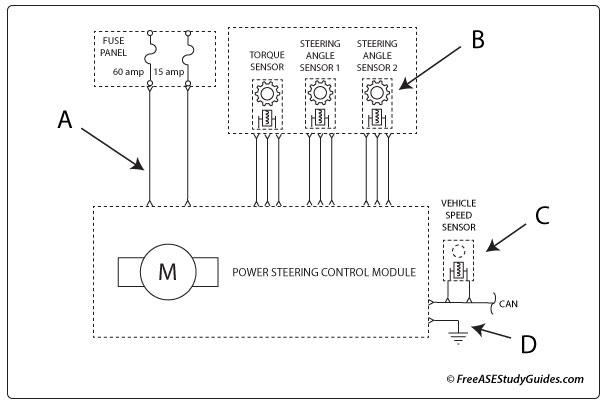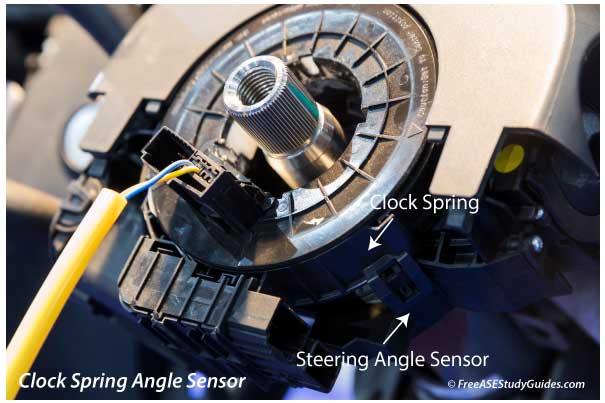ASE A4 Steering and Suspension Practice Test
61. A vehicle has a steady pull to the left. All of these will cause this condition EXCEPT:
- A. The caster angle.
- B. Low tire pressure.
- C. The camber angle.
- D. Steering U-joint coupling.
62. Technician A says a vehicle will pull to the side with the most positive camber. Technician B says that too much negative camber will result in excessive wear on the inside tread of the tire. Who is correct?
- A. Technician A
- B. Technician B
- C. Both A and B
- D. Neither A or B

63. The customer states that the steering on the vehicle in the diagram above has felt loose and sloppy after getting a four-wheel alignment. The electronic power steering and traction control warning lights were on during the test drive, and the vehicle's steering had excessive play. Which of the following is MOST likely the cause?
- A. Resistance at point A.
- B. The steering angle sensor.
- C. A faulty vehicle speed sensor.
- D. A short to ground at point D.
64. A vehicle with a rack and pinion steering system wanders and makes a popping sound while turning. Which of the following is MOST likely causing these symptoms?
- A. Weak coil springs.
- B. Loose tie rods.
- C. Worn idler arm.
- D. Aerated power steering fluid.
65. A technician is bleeding air from a hydraulic power steering system. All of the following are true about bleeding hydraulic power steering systems EXCEPT:
- A. Raise the front tires off the ground.
- B. Turn the steering wheel left and right from stop to stop to remove air from the system.
- C. Flush with clean power steering fluid.
- D. Hold the wheel against each steering stop for at least ten seconds.
